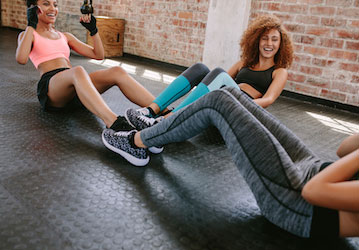Working out with a group can make it easier to hold team members and yourself accountable for staying in shape and sticking to an exercise program. Be it through team sports or just going to the gym as a group, the support system of group exercise helps keep everyone invested in meeting their fitness goals. But did you know that group workouts also can help build tight bonds between teammates? Here’s how.
Camaraderie is the feeling of mutual trust and friendship among people who spend a lot of time together. Trust between unit members is essential to completing the mission, which is why the military goes through great lengths to build unit cohesion. So, how exactly does working out together build camaraderie?
Particularly with team sports, camaraderie is built through things that make your team successful such as group cooperation and social support. Cooperation is crucial for any group or team activity. Have you ever watched a team where their passes are right, and the players always seem to know where their teammates are? Or maybe there’s one superstar, but they just can’t seem to get it together and execute as a team? Both are examples of good and poor teamwork. Why does the superstar try to put the team on his or her back? Maybe he or she doesn’t trust the less-skilled teammates to do their jobs, or maybe the superstar thinks she or he is that much better than the others. Either way, it has a negative effect on team camaraderie. However, the opposite is true for high-functioning teams. Teammates who trust each other work better together.
Trust between unit members is essential to completing the mission, which is why the military goes through great lengths to build unit cohesion.
Your shared commitment with teammates helps build camaraderie too. Even though you already have one with your unit members, team activity through sports or group workouts can provide a more social outlet. For instance, if you’re at a low optempo, there might not be much going on at work to keep your team engaged. When missions sometimes slow down, group workouts can help pick things up with a solid purpose aside from the “mission” that’s become more vague.
If you’re interested in more ways to build camaraderie or organize group workouts, read HPRC’s articles on building team cohesion and starting up a group PT session.
